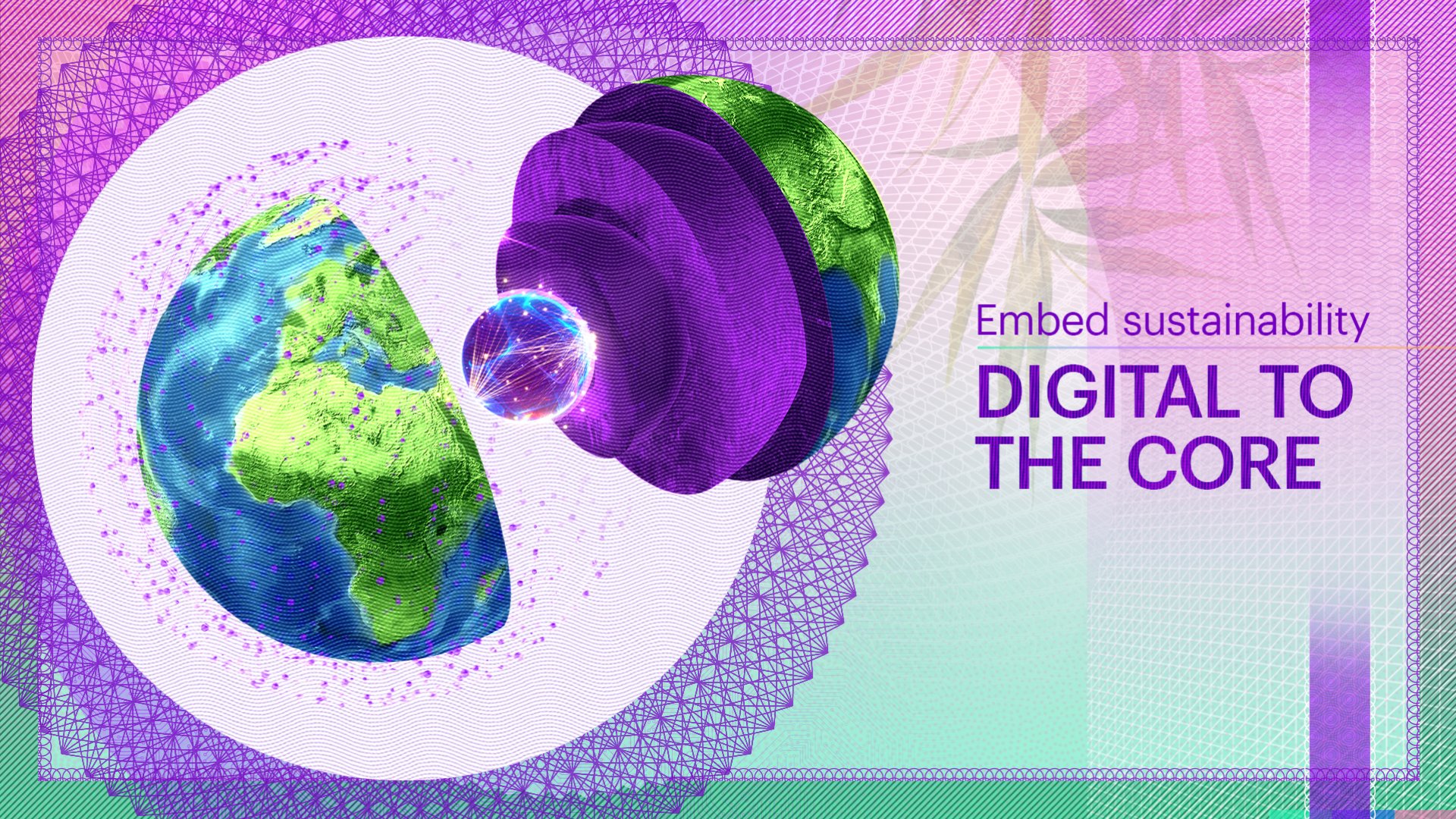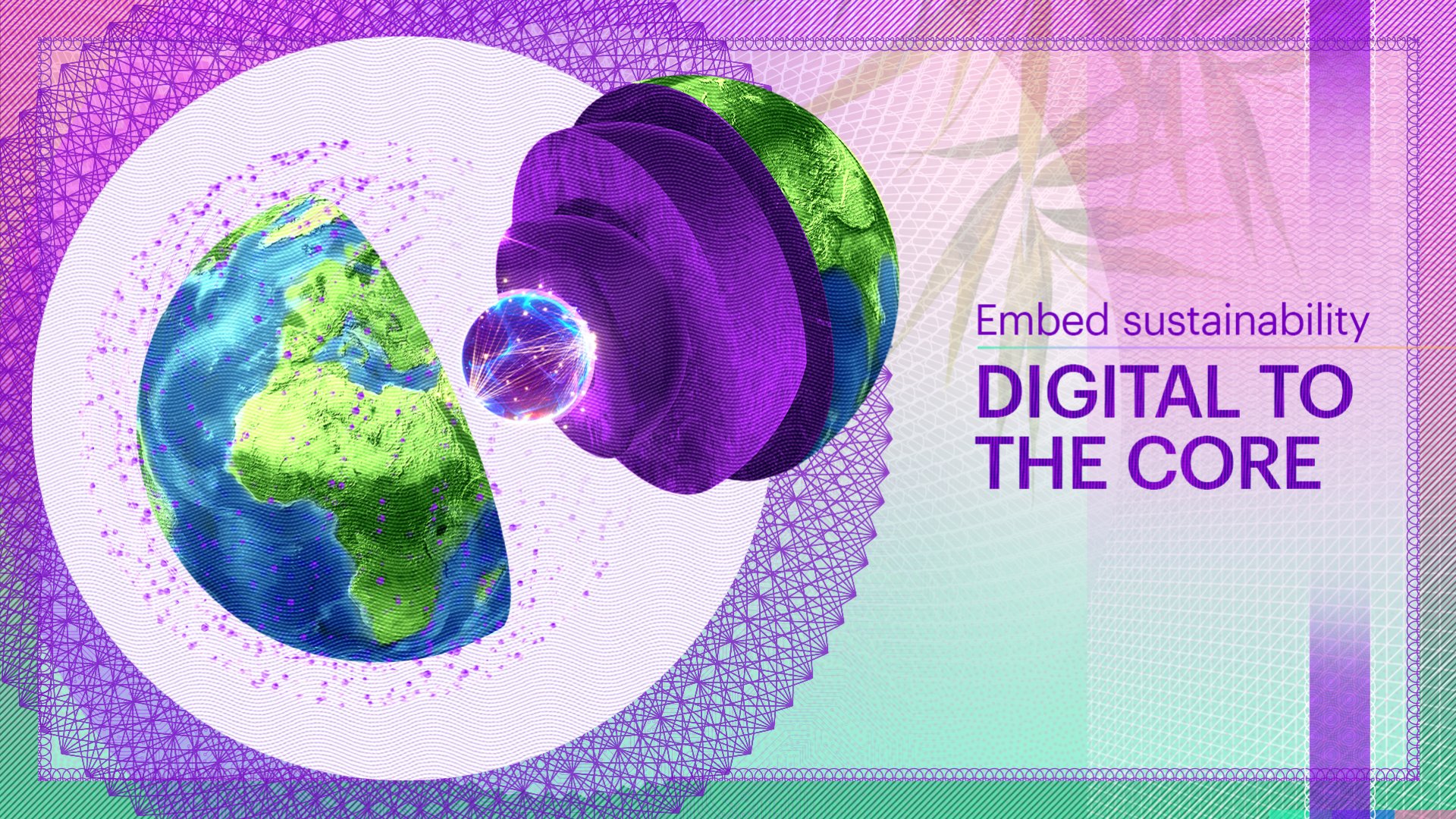Blog
Making generative AI green
5-MINUTE READ
October 18, 2023
Blog
5-MINUTE READ
October 18, 2023
Generative AI applications like ChatGPT, DALL-E and Stable Diffusion have captured the public’s imagination and are among the fastest-growing consumer applications in history. And they’re proving to be remarkable tools in addressing some of the most complex global challenges: Take Insilico Medicine. The multinational biotechnology company used generative AI to discover a COVID-19 therapeutic drug that entered clinical trials in China. Generative AI has huge potential to drive the ESG and sustainability agenda of businesses by improving climate action, driving responsible production and protecting sensitive data. That’s the upside.
The downside: On top of well-known social implications, such as fears around the impact on jobs and the ability to generate disinformation, developing, training and operating GenAI can use a tremendous amount of energy and create a significant carbon footprint. The Generative Pre-trained Transformer 3 (GPT-3) used in the drug trials alone may have required up to 1.287 gigawatt hours of electricity to train, which is equivalent to the annual energy consumption of 120 US homes. The process also likely generated 502 tons of carbon emissions, which is comparable to the annual emissions of 110 US cars.
Researchers at Facebook estimate that everyday usage of large language models burns an even larger carbon footprint. If current trends continue, machine learning systems could consume nearly all of the world’s energy production by 2040.
The greening of generative AI is the next frontier to retain the huge positive impact it can have in driving the broader sustainability agenda.


What steps can companies take to enhance energy efficiency and reduce carbon emissions throughout the AI development and operations cycle?
We suggest three:
As generative AI becomes more prevalent, it is crucial for companies and communities to have a reliable network of individuals, standards, tools, and practices. The Green Software Foundation (GSF) exemplifies how collaboration can establish such a network.
The GSF, founded by Accenture, Microsoft, GitHub, and Thoughtworks, is dedicated to supporting the Information and Communications Technology (ICT) sector in reducing its greenhouse gas emissions by 45% by 2030. The foundation focuses on various initiatives, including assessing and reporting the carbon footprint of applications, discovering energy-saving techniques for AI, and developing tools and training for green software engineering. One of their notable contributions is the Software Carbon Intensity technical specification, which provides guidance on measuring total carbon emissions. By addressing the issues of ambiguous metrics and inconsistent standards across industries, the GSF aims to find solutions for these challenges.
As generative AI continues to evolve, it presents both new opportunities and risks for sustainability. While we rely on this innovative technology to address the world's most pressing challenges, it is crucial that we proactively implement measures to mitigate any potential drawbacks.
This blog is part of a series discussing how leaders can embed sustainability into different aspects of their organizations to create value and impact. The other topics are: